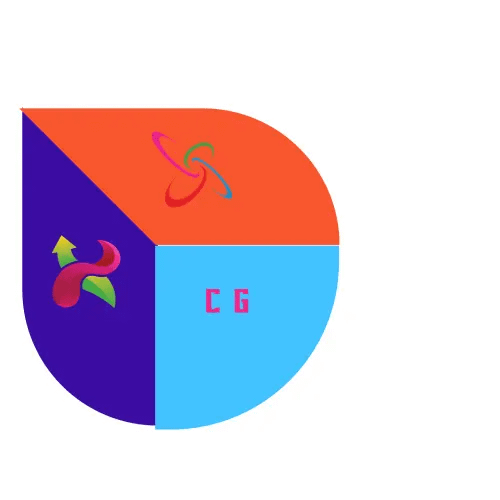
Lazarus IDE Free Download
Key Details
Certainly! Here are key details about Lazarus IDE:
### 1. **Purpose and Overview:**
– **Purpose:** Lazarus is an integrated development environment (IDE) primarily designed for rapid application development (RAD).
– **Overview:** It provides a visual development environment for creating cross-platform applications using the Free Pascal compiler.
### 2. **Language and Compiler:**
– **Language:** Lazarus uses the Pascal programming language.
– **Compiler:** The Free Pascal compiler is integrated into Lazarus, enabling the development of high-performance applications.
### 3. **Cross-Platform Development:**
– Lazarus allows developers to create applications that run on multiple platforms, including Windows, Linux, and macOS, with a single codebase.
### 4. **Component-Based Development:**
– Lazarus follows a component-based development approach where developers design user interfaces by assembling pre-built components.
### 5. **Open Source and Free:**
– Lazarus is open-source and freely available, making it accessible to a wide range of developers.
### 6. **Integrated Debugger:**
– Lazarus comes with an integrated debugger that helps developers identify and fix issues in their code during the development process.
### 7. **Object Inspector:**
– The Object Inspector is a key feature that allows developers to view and modify the properties of components in a visual manner.
### 8. **Component Palette:**
– The Component Palette provides a variety of components (e.g., buttons, labels, edit boxes) that developers can drag and drop onto the form to create the user interface.
### 9. **Project Management:**
– Lazarus supports project management features, allowing developers to organize and configure their projects efficiently.
### 10. **Version Control Integration:**
– Lazarus supports integration with version control systems like Git, enabling developers to manage and track changes in their projects.
### 11. **Community and Documentation:**
– Lazarus has an active community that provides support, forums, and resources for developers.
– Extensive documentation is available to assist developers in learning and mastering Lazarus IDE.
### 12. **Extensibility:**
– Lazarus is extensible, allowing developers to create and use custom components, enhancing the capabilities of the IDE.
### 13. **User-Friendly Interface:**
– Lazarus features a user-friendly interface with a customizable layout, making it easy for developers to navigate and work on their projects.
### 14. **Portability:**
– Applications developed with Lazarus are highly portable, making it convenient for developers to deploy their software on various platforms.
Lazarus IDE, with its combination of ease of use, cross-platform capabilities, and robust development features, is a valuable tool for developers seeking to create efficient and platform-independent applications.
How to use
Lazarus is a free and open-source integrated development environment (IDE) for rapid application development (RAD) using the Free Pascal compiler. It allows developers to create cross-platform applications with ease. Here’s a basic guide on how to use Lazarus IDE:
### Installation:
1. **Download Lazarus:**
– Visit the official Lazarus website (https://www.lazarus-ide.org/) and download the installer for your operating system (Windows, macOS, Linux).
2. **Install Lazarus:**
– Run the installer and follow the on-screen instructions.
– Lazarus will be installed along with the Free Pascal compiler.
### Creating a New Project:
1. **Open Lazarus:**
– Launch Lazarus IDE after installation.
2. **Create a New Project:**
– Click on “Project” in the menu bar.
– Select “New Project.”
3. **Choose Project Type:**
– Choose the type of project you want to create (e.g., Application, Library).
– Select the target platform (e.g., Win32, Win64, Linux, macOS).
4. **Save Project:**
– Save your project by selecting “Save All” or pressing `Ctrl + Shift + S`.
– Choose a project directory and provide a name for your project.
### Developing in Lazarus:
1. **Adding Components:**
– Lazarus uses components to build the user interface. Access the component palette by clicking on the “Component” tab.
– Drag and drop components onto the form to design your user interface.
2. **Writing Code:**
– Double-click on a component to open its event editor and write code for events like button clicks.
– Write the main program logic in the code editor. Use Pascal language syntax.
3. **Compiling and Running:**
– Click the green “Run” arrow or press `F9` to compile and run your application.
– Lazarus will compile your code using the Free Pascal compiler and execute the application.
4. **Debugging:**
– Use the integrated debugger to identify and fix issues in your code.
– Set breakpoints by clicking on the left margin in the code editor.
### Additional Features:
1. **Object Inspector:**
– The Object Inspector displays the properties of selected components.
– Modify properties visually or through the Object Inspector.
2. **Component Palette:**
– The Component Palette provides a wide range of components like buttons, labels, edit boxes, etc.
– Customize your UI by dragging components onto the form.
3. **Project Options:**
– Configure project options under “Project” in the menu bar.
– Set compiler options, version information, and other project-specific settings.
4. **Version Control:**
– Lazarus supports version control systems like Git. Integrate your project with version control through the “Project” menu.
### Conclusion:
Lazarus IDE is a powerful tool for developing cross-platform applications using the Free Pascal compiler. With its intuitive interface and extensive component library, Lazarus simplifies the process of creating robust applications for various platforms. Explore the documentation and community resources for more advanced features and tips.
